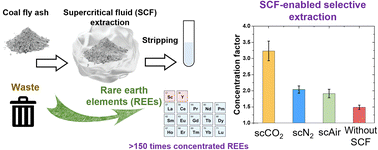2023-03-28 パシフィック・ノースウェスト国立研究所(PNNL)
畑はすべて同じと扱われるため、モデルの炭素循環に誤りが生じることが多いため、農業の影響をより現実的に表現することが必要であるとされた。畑には地域的・局地的な気候に影響を与えるため、実際の作物の種類から土地管理方法までをより正確に表現することが、将来の炭素循環を正確に予測することにつながるとのこと。
<関連情報>
- https://www.pnnl.gov/news-media/modeling-agriculture-matters-carbon-cycling
- https://agupubs.onlinelibrary.wiley.com/doi/10.1029/2022JG007187
E3SM土地モデル(ELMv2)における作物ローテーションと空間的に変化する作物パラメーターの影響について The Impact of Crop Rotation and Spatially Varying Crop Parameters in the E3SM Land Model (ELMv2)
Eva Sinha, Ben Bond-Lamberty, Katherine V. Calvin, Beth A. Drewniak, Gautam Bisht, Carl Bernacchi, Bethany J. Blakely, Caitlin E. Moore
Journal of Geophysical Research: Biogeosciences Published: 16 March 2023
DOI:https://doi.org/10.1029/2022JG007187

Abstract
Earth System Models (ESMs) are increasingly representing agriculture due to its impact on biogeochemical cycles, local and regional climate, and fundamental importance for human society. Realistic large scale simulations may require spatially varying crop parameters that capture crop growth at various scales and among different cultivars, as well as common crop management practices, but their importance is uncertain, and they are often not represented in ESMs. In this study, we examine the impact of using constant versus spatially varying crop parameters using a novel, realistic crop rotation scenario in the Energy Exascale Earth System Model (E3SM) Land Model version 2 (ELMv2). We implemented crop rotation by using ELMv2’s dynamic land unit capability, and then calibrated and validated the model against observations collected at three AmeriFlux sites in the US Midwest with corn soybean rotation. The calibrated model closely captured the magnitude and observed seasonality of carbon and energy fluxes across crops and sites. We performed regional simulations for the US Midwest using the calibrated model and found that spatially varying only a few crop parameters across the region, as opposed to using constant parameters, had a large impact, with the carbon fluxes and energy fluxes both varying by up to 40%. These results imply that large scale ESM simulations using spatially invariant crop parameters may result in biased energy and carbon fluxes estimation from agricultural land, and underline the importance of improving human-earth systems interactions in ESMs.
Plain Language Summary
Crops are increasingly being characterized in global land models because of their impact on local and regional climate. However, there is limited understanding of the impact of crop rotation and of different crop cultivars on carbon and energy fluxes from the land surface. Our study implements crop rotation and spatially varying crop parameters in the Energy Exascale Earth System Model Land Model and finds that doing so improves carbon and energy flux estimation from cropland area. These findings emphasize the importance of capturing agricultural management practices and variability in growth characteristics across different crop cultivars in global land models.
Key Points
- This study implements corn soybean rotation and spatially varying crop parameters in the Energy Exascale Earth System Land Model
- The model is calibrated and validated against observations collected at three AmeriFlux sites in the US Midwest
- We find that spatially varying crop parameters resulted in improved flux estimation from cropland areas



